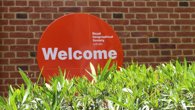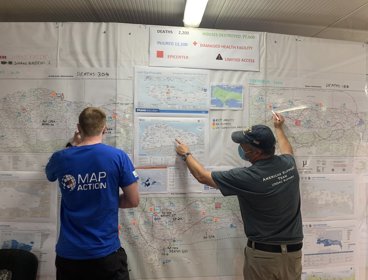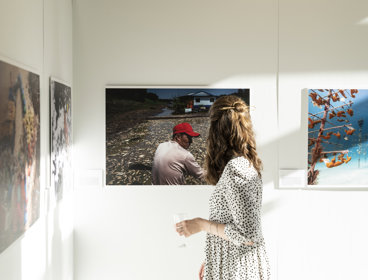This month, a showcase of new work from artist and printmaker Kristina Chan was put on display at Canada House in London. The exhibition, Habitable Climes, is part of The Sunderland Collection Art Programme, which invites contemporary artists to engage with their private cartographic collection.
Kristina’s work explores how the accuracy of recording territories through maps, measurements and visual records blurs over time, and how interpretation is also subjective. She also considers the implications of exploration and climate change on different habitats.
This new exhibition draws on Kristina’s encounters with the Sunderland Collection’s early modern maps and atlases and her journeys to the Arctic Circle via the Svalbard Channel and the Nevada Desert. It also represents the latest in a series of artistic partnerships for the Society with photos of historical instruments from our Collections making up around a third of Kristina’s exhibition, and her artwork, Impossible Measures, is fully inspired by the Collections.
The partnership with the Society began after Kristina stumbled across a niche online market of nautical miniatures of sextons, ship cannons and compasses. Intrigued and keen to explore these objects further, Kristina met Dr Katie Parker, Cartographic Collections Manager at the Society, and they discovered an aligned curiosity and vision.
Kristina said: “I spent a long time poring over the online catalogue to see what I wanted to look at and then, once I got to the Society, it was wonderful. Katie, Eugene and Lee were so helpful, they brought out these amazing instruments… about 20 more pieces that I hadn't even thought to ask about.”
Kristina then photographed the instruments through a frosted Perspex screen, drawing attention to the fallibility of explorers’ reputations and measurements. “It was a full morning, we set up one of the back rooms and had to establish a system as to how close the frosted sheets and all the props could get, find the right angles, while working within the realm of respecting the collection. It was quite delicate and a little bit tricky at first, but then we got a good momentum going.” The result was Impossible Measures, a striking series of 16 etchings.
Historical collections are a fascinating and useful resource, cultivating curiosity and collaboration for many including geographers, cartographers and artists. Katie was as excited by the partnership as Kristina: “Kristina approached our instrument collection with excitement and care; helping to set up the photo shoot allowed me to see our artefacts in a new light. The frosted glass beautifully expressed the scepticism many have toward the supposed precision of maps and narratives of exploration. Our team really enjoys working with artists as their vision is expansive and brings the Society to new audiences in dynamic ways.”
Kristina took the resulting footage back to her studio: “I like to say I work backwards in time, starting with photography and then turning the image into a handprinted etching made from a 20th century intaglio printing press.” This process “merges photography with traditional etching, a technique that is roughly 600 years old. The inks are much thicker, solid and deeper than printer inks.”
The Habitable Climes exhibition is open until the 30 April at Canada House Gallery on Trafalgar Square in London and available to view online as a digital exhibition at www.Oculi-Mundi.com.
Kristina is giving a free talk about her recent work next week, on Monday 7 April, at the Society.
If you are interested in exploring our Collections, why not book an appointment to visit the Foyle Reading Room? Everyone is welcome and access is free for members.




